Table of Contents
Introduction
This is a quick blog post to see what interest there is for USB Type-C (also known as USB-C), and what applications people are interested in, and what they are working on, or plan to be working on.
I figured perhaps a good way for anyone to learn a little about USB-C could be to dip toes into the subject with small projects. For instance, I learned a tiny bit about USB-C connectors with a USB-C UART adapter project: Building a USB-C USB-UART Board
In that blog post, I learned that the USB4085-GF-A connector is fairly usable and easy to solder. It would be great to hear of other connectors too, for instance, surface-mount pins may be easier.
I also learned in that blog post what pins to connect, to use the USB-C connector for basic USB 2.0 functionality, and for getting 5V power from the connected PC.
 (Image source: GCT website)
(Image source: GCT website)
One annoyance (sometimes minor) is that there will almost always be a need to route some traces sideways because the pins are too closely spaced together to route between them. The PCB below (from the USB-C UART project) required one trace to be routed out of the side on the underside of the board, as can be seen on the left side.

After a discussion Power banks for Home IT equipment - anyone used them? USB-C Power Delivery seemed to be an interesting topic. USB-C Power Delivery is a technology that allows the USB connection to carry higher voltages and current than the 5V that is ordinarily expected with USB. Jan Cumps and I identified some useful-looking products.
Here are some avenues for exploration of USB-C Power Delivery:
USB-C Click Board
The MikroE USB-C Sink Click Board can be used to connect to a USB-C power supply (or to a mobile phone charger with a USB-C connection on it) in order to obtain power. The USB-C Sink Click board can be configured to request different voltages from the supply/charger, depending on needs. The board uses a STUSB4500 chip (not the easiest in the world to configure, but fortunately there is existing code that could be used).
 (Image source:MikroE website)
(Image source:MikroE website)
USB-C Power Meter
The ADM00921 Power Meter board looks really neat. It can be used to monitor voltage/current/power when working with USB-C devices.
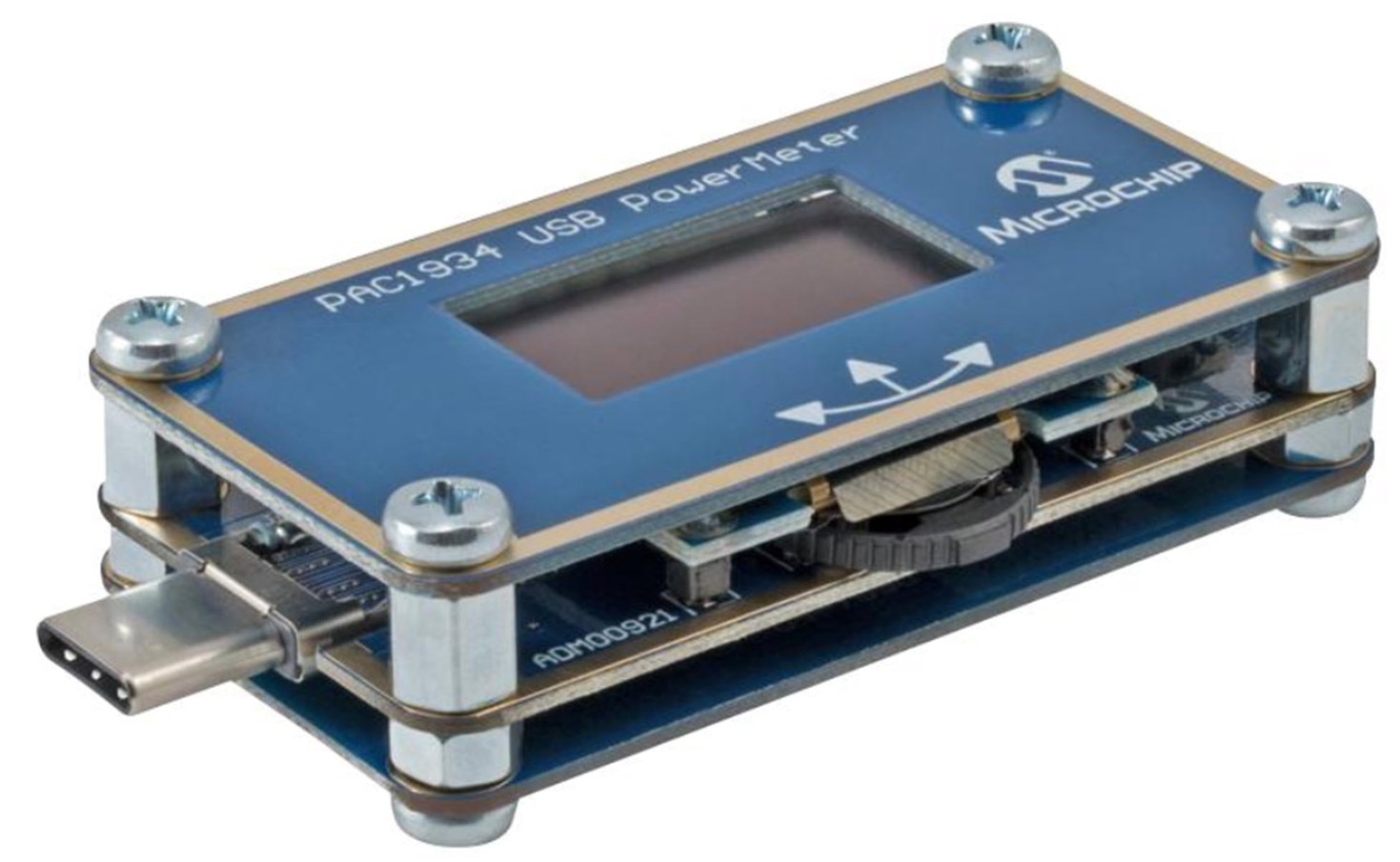 (Image source: Farnell website)
(Image source: Farnell website)
Mobile Phone Charger
There are many chargers that support USB-C Power Delivery, at various voltages and maximum currents. Often the maximum capability of these consumer items is only specified in Watts.
Some of the Anker chargers are quite nice, because they use a GAN semiconductor device internally, for high efficiency while supporting high power USB-C Power Delivery loads.
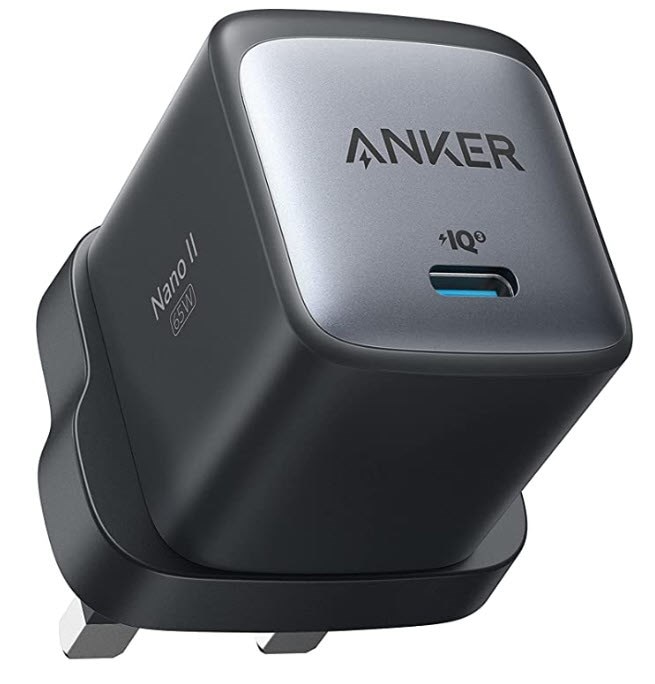 (Image source: Amazon)
(Image source: Amazon)
YZXStudio USB-C Power Meter
This looks neat for obtaining measurements when working with USB-C devices too. There are a lot of variants of this power meter, some may be better than others.
 (Image source: AliExpress)
(Image source: AliExpress)
USB-C Laptop Power Supply
This device has two USB-C connector outputs, advertised (perhaps overly bold of them) for up to 100W each. The input connector can be connected to a vehicle battery. I have no idea if it is any good, I have not tried it (I bought one to experiment with, however).
 (Image source: AliExpress)
(Image source: AliExpress)
Monolithic Power Systems (MPS) Integrated Circuits
Due to the world semiconductor shortage, a lot of USB-C chips are hard to obtain. However, there are some nice-looking Monolithic Power semiconductors that are still available, such as the
MP5031 USB-C Power Delivery Controller .
This chip can be used at the power source end of the USB-C connection. It is used as the source end of the power negotiation and based on that, the MP5031 will send control signals to a separate DC-DC converter chip to adjust the voltage to suit.
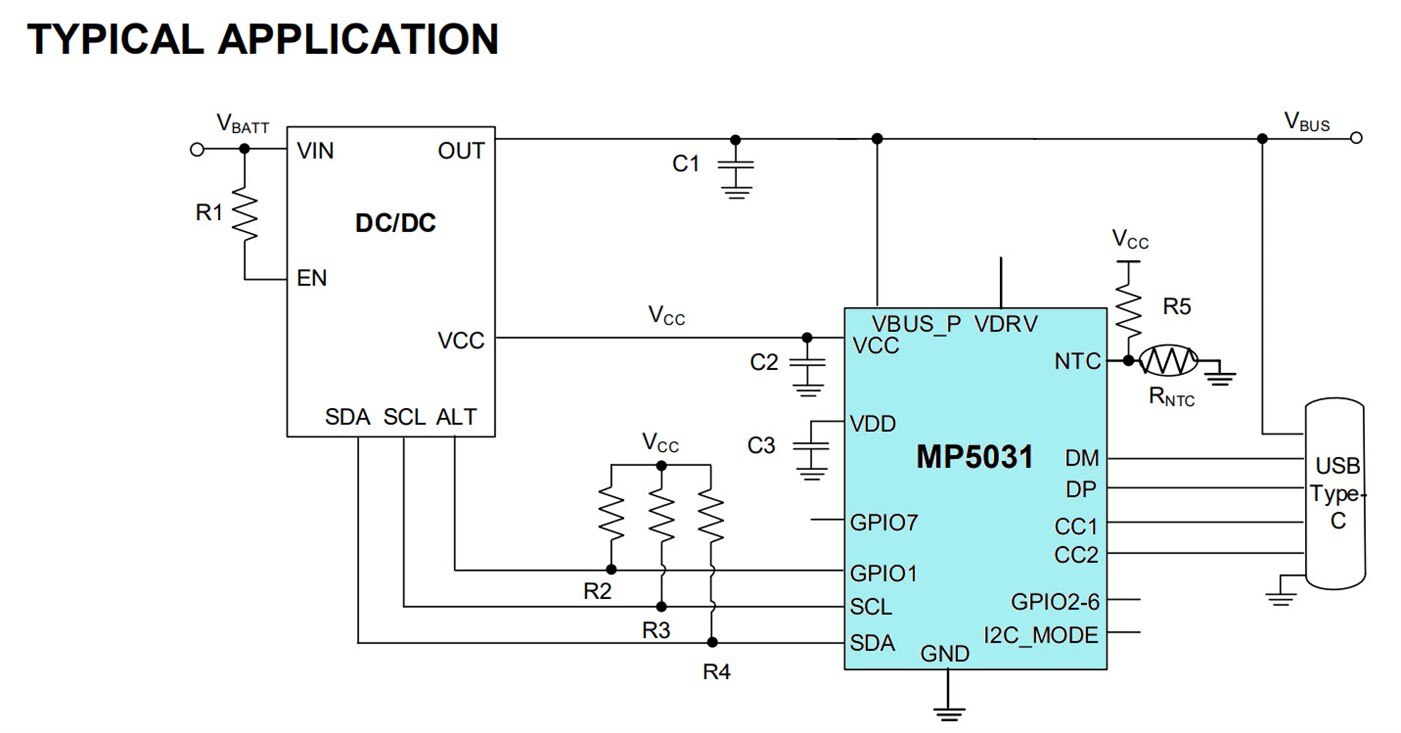 (Image source: MPS)
(Image source: MPS)
USB-C PD Protocol Analyzer
Following a link by misaz the following protocol analyzer tool was discovered, CY4500 .
The tool sniffs traffic passing through two USB-C connectors, and sends it via a third USB connector (Micro USB) to the PC running the graphical app.
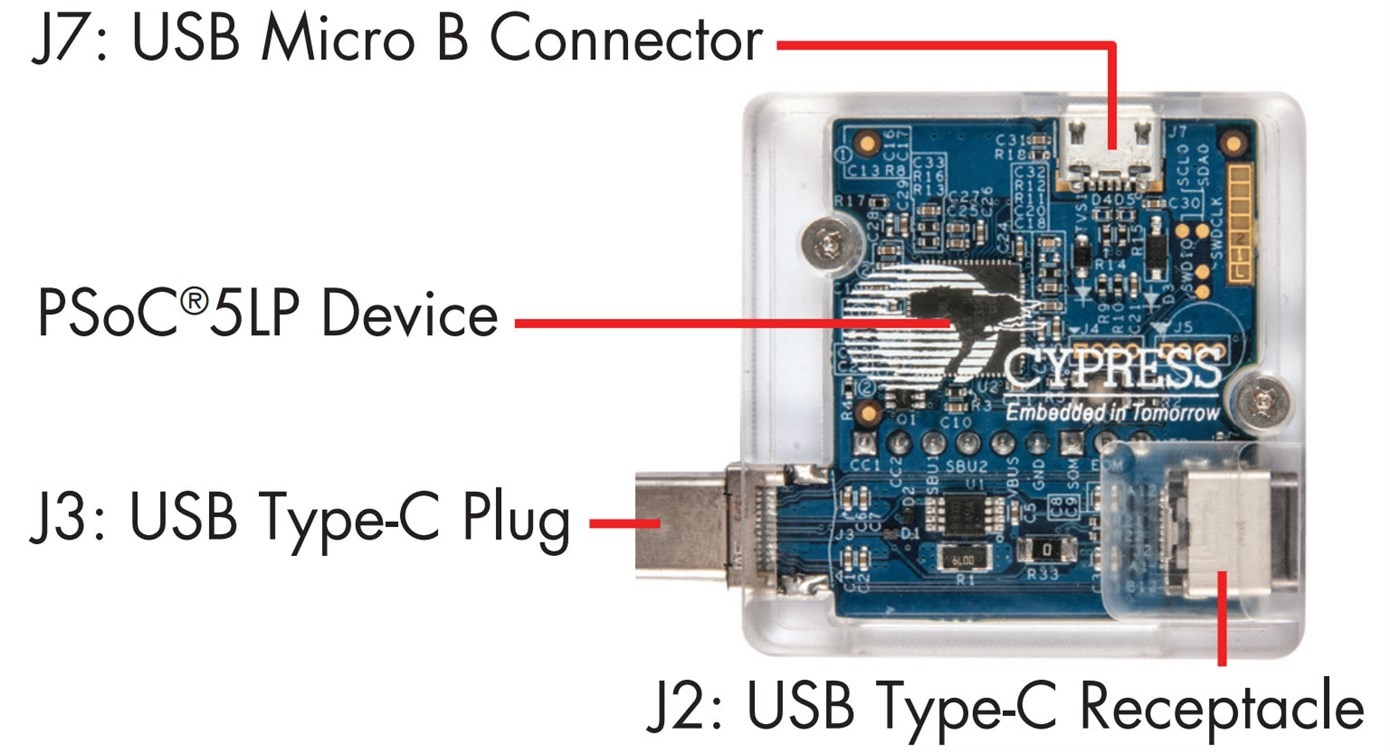 (Image source: Infineon/Cypress)
(Image source: Infineon/Cypress)
Screenshot from the PDF Quick Start Guide:
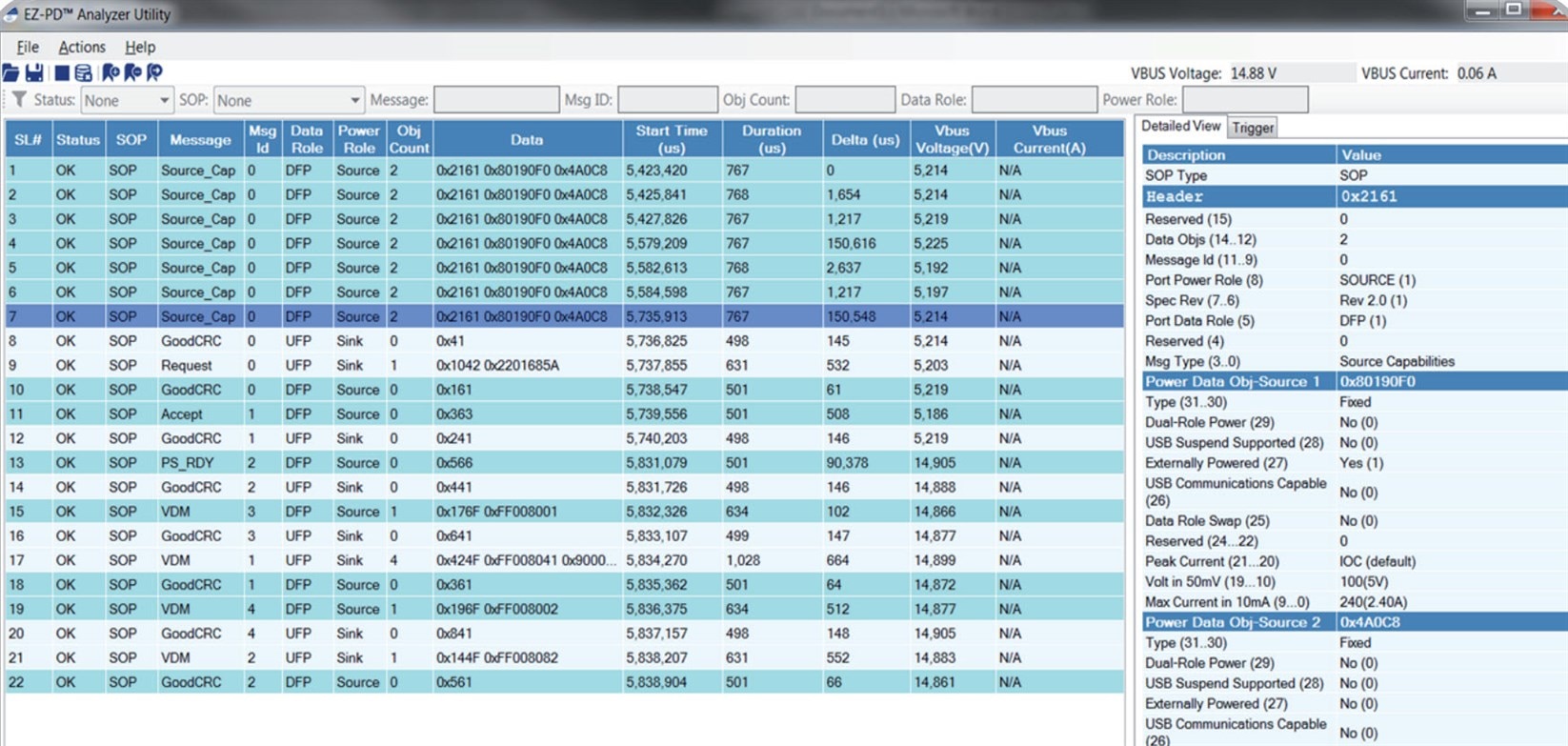
Soldering Tools
If you’re working directly with integrated circuits, then most of them have QFN or other tiny packages and custom circuit boards will be required. A hot air tool and a pre-heater would be very useful. There’s a low-cost hot air tool here: Multicomp Pro MP740784
It looks very similar to the Atten ST-862D which has favorable reviews. Therefore I think the Multicomp Pro product should be excellent.
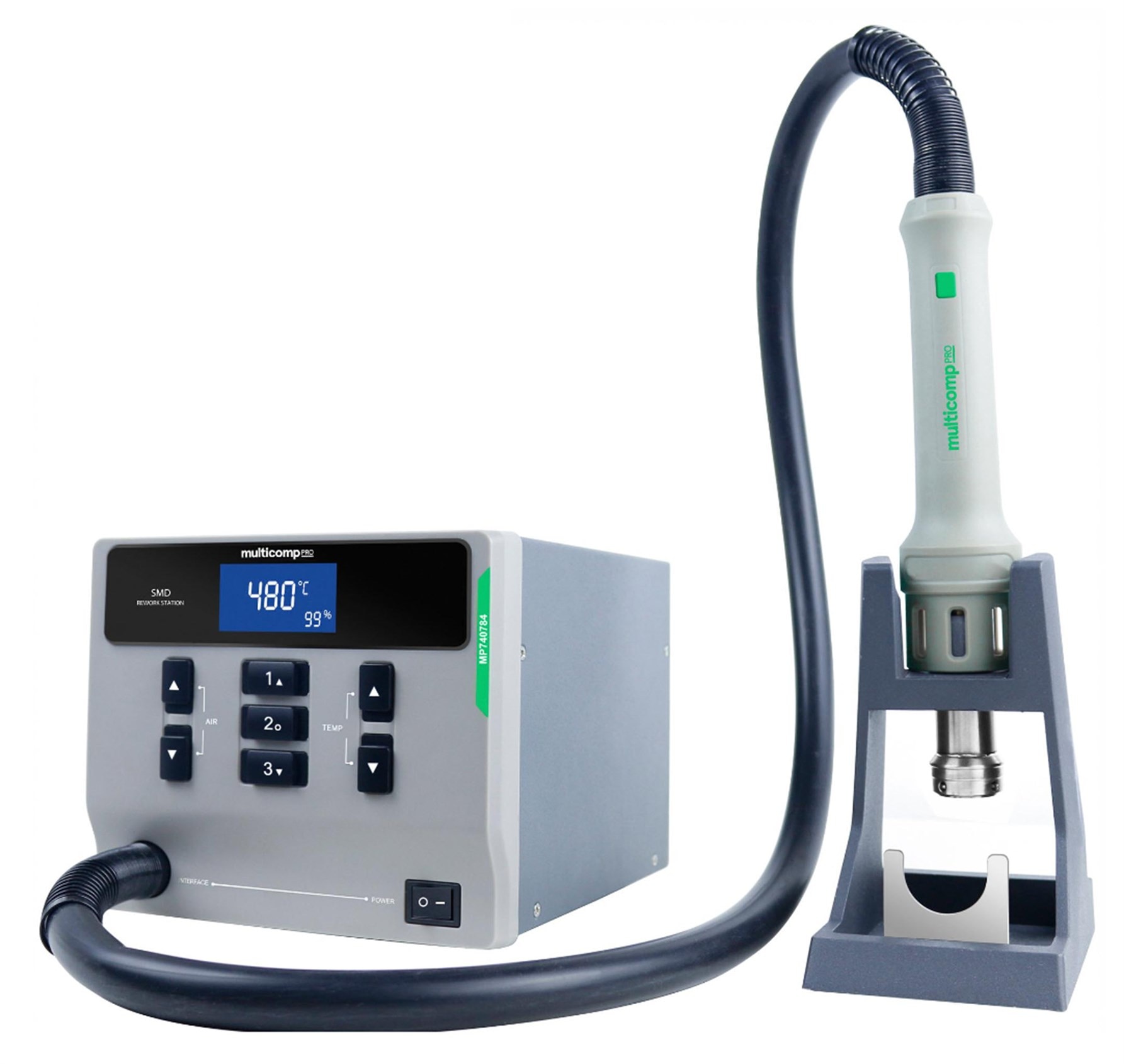 (Image source: Farnell)
(Image source: Farnell)
For a pre-heater, perhaps a hot-plate could be used, they are low-cost too, available from Amazon/eBay and so on.

If you’re not interested in soldering tiny parts, but still want to explore USB-C PD, then the modules mentioned earlier could be the way to go.
Next Steps
If you’re interested in USB-C, drop a comment below : ) It would be great to hear about other people’s experiences, or we can learn together.
If there are other USB-C related components or products or soldering or test tools that seem relevant/interesting, please mention it in the comments, since it could be helpful to many people.
From my perspective, I think it would be interesting to experiment with the technology end-to-end. My main interest however lies in using USB-C for providing battery-sourced (could also be solar-sourced) power to laptops and mobile phones in the event of mains power outages.
Thanks for reading!
